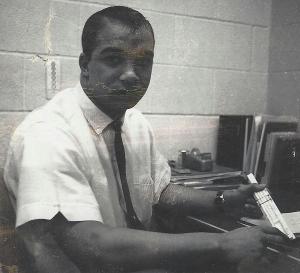The Catholic high school’s spiritual leader does not take for granted the partnership forged with the greater, local community over nine decades.
By Fr. Richard Peddicord, O.P., President of Fenwick High School

Ninety years ago next week, the Dominican Order established a college-preparatory secondary school on Washington Blvd., bordered by East Ave., Scoville Ave. and Madison St. When Fenwick High School opened on September 9, 1929, some 200 boys ventured through its wooden, church-like doors. Many of them walked to school from their homes in Oak Park and on the West Side, while others coming from farther away in Chicago took streetcars.
Over these many years, Fenwick has survived and thrived, despite the Great Depression (which started six weeks after the school opened!), world wars and changing times, including enrolling female students in the early 1990s. However, the mission at the outset has stood the test of time: Guided by Dominican Catholic values, our priests, instructors, coaches, administrators and staff members inspire excellence and educate each student to lead, achieve and serve.
Fenwick today has a co-educational enrollment of nearly 1,150 students as well as two Golden Apple-winning teachers on its esteemed faculty. Our school’s impressive list of alumni includes a Skylab astronaut, Rhodes Scholars, Pulitzer Prize winners, a Heisman Trophy recipient and other leaders making a positive influence locally and internationally.
Great neighbors
From our beginning, Fenwick and Oak Park always have enjoyed a symbiotic relationship. “Fenwick and the Village of Oak Park have a long history of working together,” Mayor Anan Abu-Taleb has stated. “From its inception, our fortunes and our futures have been intertwined.”
As an investment in our future in Oak Park, last month we began construction on a six-story parking structure seeded with generous funding by former McDonald’s CEO and alumnus Michael R. Quinlan, Class of 1962. By next summer, some 325 cars will be taken off the streets, so to speak.
“With this new garage, Fenwick will be taking a major step toward reducing its impact on the neighborhood,” Mr. Abu-Talen noted at the August 13 garage groundbreaking ceremony. The private school “has always worked to be a great neighbor …,” and “also is a key partner in the development of the Madison corridor.
“Fenwick has been a great contributor to Oak Park in many ways,” the Mayor continued: “first, as an educational institution of national reputation; second, as a Catholic school filling the needs of a diverse and inclusive community.”
We are, indeed, proud of our racial and socio-economic diversity. More than 30% of our talented student body identifies as something other than Caucasian, and we provide nearly $2.5 million in need-based financial aid annually to our students through the generosity of many benefactors.
They come to Oak Park
As Mayor Abu-Taleb notes, “Fenwick always has been a reason why many families choose to live in Oak Park — and the reason many others visit the Village and support our local economy.” Last school year, our students came from more than 60 cities, towns and municipalities, including these top 20:
Continue reading “As Fenwick Turns 90, ‘We Give Thanks to You,’ Oak Parkers!”


 School records dating back 64 years confirm that alumnus Richard Cochrane ’59 blazed a trail as Fenwick’s very first African-American student and graduate. Originally from Maywood, IL, Mr. Cochrane now lives in the sunny Southwest. In high school, he was active in student government (class treasurer and secretary) and played football and basketball (captain).
School records dating back 64 years confirm that alumnus Richard Cochrane ’59 blazed a trail as Fenwick’s very first African-American student and graduate. Originally from Maywood, IL, Mr. Cochrane now lives in the sunny Southwest. In high school, he was active in student government (class treasurer and secretary) and played football and basketball (captain).


 Every February Chicago Catholic League (CCL) football coaches congregate at the league’s annual clinic in Oak Park at Fenwick, where the powwow has been held every winter for the past 72 years. Older fans will recall that, in the 1960s and ’70s, Fenwick and the CCL were recruiting hotbeds for Big Ten football coaches, including University of Michigan legend Bo Schembechler. Some coaches also may recall that, a few years back, a keg could be found tapped in the school’s lower-level student “green” cafeteria, where the post-clinic fraternizing commenced. Nowadays the coaches toast their religion and each other on Madison Street in Forest Park, which is exactly where the college coaches knew where to find them back in the day.
Every February Chicago Catholic League (CCL) football coaches congregate at the league’s annual clinic in Oak Park at Fenwick, where the powwow has been held every winter for the past 72 years. Older fans will recall that, in the 1960s and ’70s, Fenwick and the CCL were recruiting hotbeds for Big Ten football coaches, including University of Michigan legend Bo Schembechler. Some coaches also may recall that, a few years back, a keg could be found tapped in the school’s lower-level student “green” cafeteria, where the post-clinic fraternizing commenced. Nowadays the coaches toast their religion and each other on Madison Street in Forest Park, which is exactly where the college coaches knew where to find them back in the day.